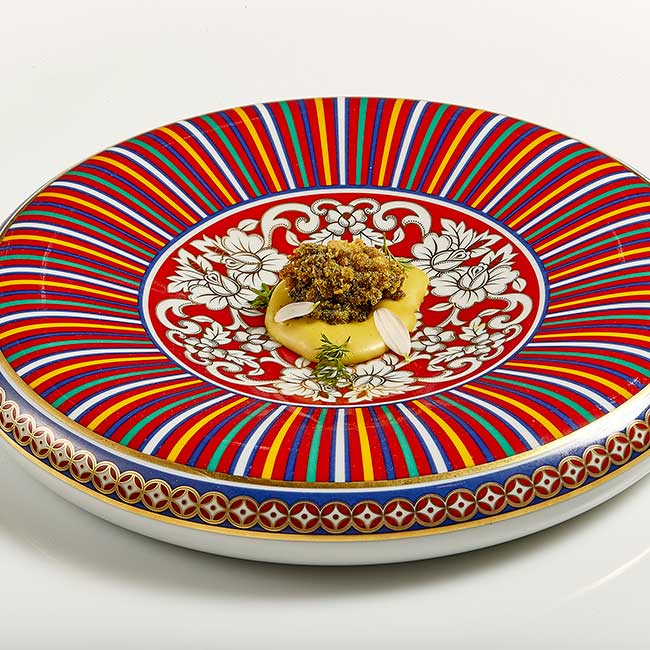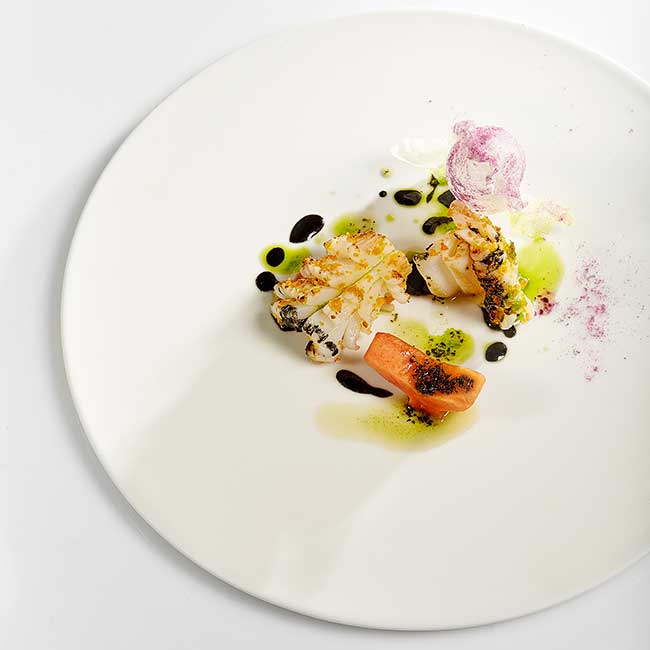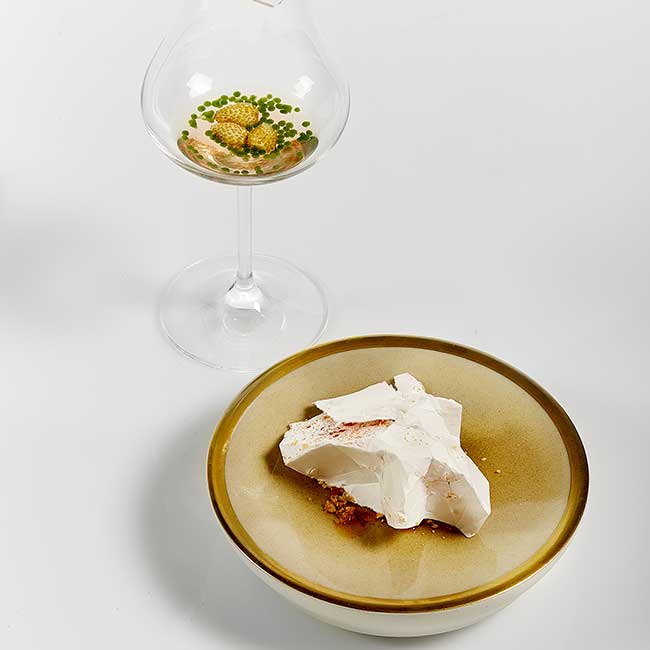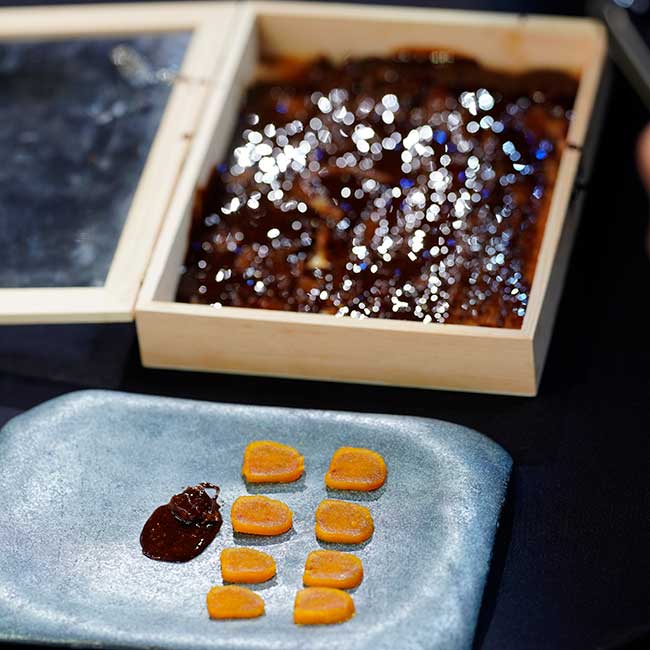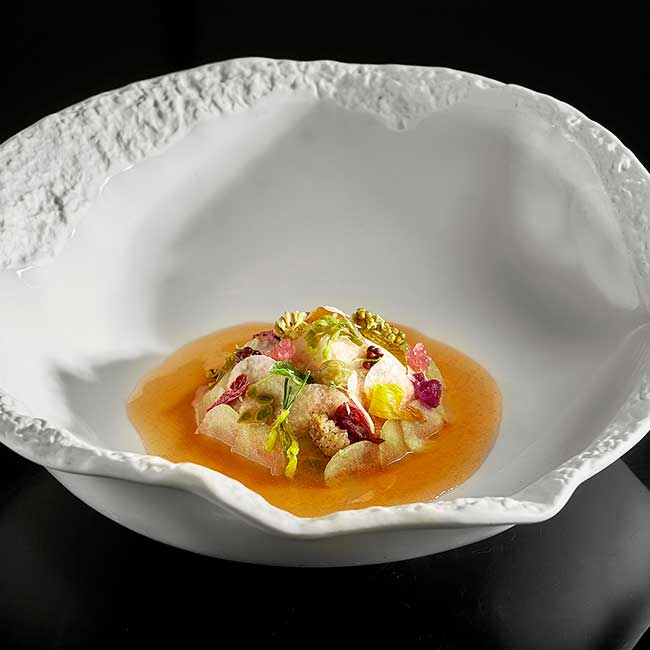The chef from El Celler de Can Roca presented the menu served to the Heads of State at the 2019 United Nations Climate Change Conference held in Madrid. According to Roca, the menu sought to reflect "a responsible ethics code and an effort to give back to society what society has given us. A food chain that is environmentally sustainable, socially just and economically inclusive."
With that in mind, the first dish they created was called "Clear water & dirty water," a broth with freeze-dried chanterelles, truffles and porcini mushrooms and toasted chickpeas, a transparent vegetable water poured onto the plate as a broth.
The second environment-inspired dish was "Hot seas." This is "a vegetable surf and turf with no meat, fish, seafood... With a base of edible plankton, underlining the role of the sea as a source of food," he said. Color is important in this dish, and the dressings—olive oil, sunflower seeds and juice from different herbs and stalks—give it body.
In his cooking, the efficient use of products is one of the main rules and the common theme in the third dish, "Vegetable fermentation and preservation, 'a gateway to the struggle against famine and food waste.' " It's also a dish that aims to highlight Spanish legumes. "A nut romesco sauce which includes lentils, chickpeas and beans as a base and which, together with a spicy juice, becomes a delicious, fresh vegetable ceviche, topped with turnip and cucumber shavings as well as flowers, sprouts and stalks.
In the fourth dish, "Minimize animal protein," Joan Roca served roasted beets aged in cold rooms, which gives diners the feeling like they're eating meat; grilled watermelon, "which [also] gives the impression of eating meat, thanks to the flavor from the grill and the smoke;" and tomatoes, purple onions, candied peppers and purple carrots "to maintain the color of meat without there being any meat in the dish."
Foods & Wines from Spain again showed its support for Madrid Fusión by coordinating the attendance of a select group of international journalists from leading media outlets ssuch as Hotel Revue and Marmite (Switzerland), Chef & Restaurant and Yes Chef (United Kingdom), Frisch Gekocht, Die Zeit and Die Welt (Germany), Food & Wine and Fine Cooking (US), Follow Me Foodie (Canada).
.png.transform/rendition-xs/image_image%20(1).png)

